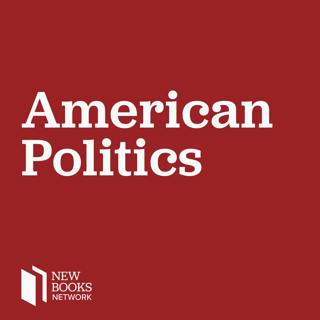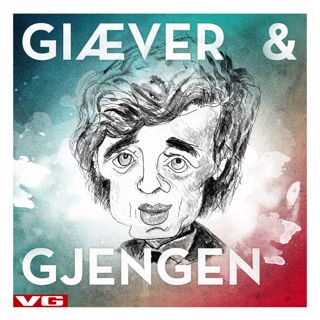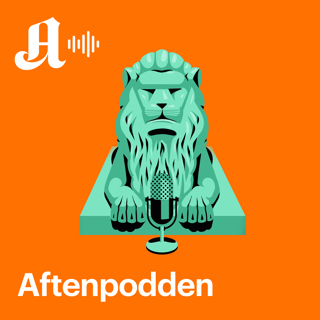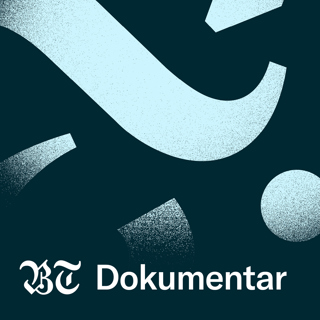
Michael G. Miller, “Subsidizing Democracy: How Public Funding Changes Elections and How it Can Work in the Future” (Cornell UP, 2014)
With a 2016 presidential election likely to cost several billions dollars, is there any way to prevent money from completely overwhelming US politics? Public financing of campaigns has offered one solution and is the focus of Michael G. Miller‘s new book, Subsidizing Democracy: How Public Funding Changes Elections and How it Can Work in the Future (Cornell UP, 2014). In several states – Arizona, Connecticut, and Maine – implemented full public funding plans in the early 2000s. These state-level efforts allow Miller to test several assumptions about public funding, including an argument that they could increase the quality of candidates in competitive races, free candidates to meet more registered voters, and possible increase turnout. The empirical findings from Miller’s research provide convincing evidence that many of these goals have been met. Miller is assistant professor of political science at Barnard College. Learn more about your ad choices. Visit megaphone.fm/adchoices
9 Jun 201521min

Sophia Z. Lee, “The Workplace Constitution from the New Deal to the New Right” (Cambridge UP, 2014)
Americans believe they have a number of protections on the job, which are common in other democracies (free speech and privacy, defense against capricious firing, etc.). They are wrong. And in her fascinating new book The Workplace Constitution from the New Deal to the New Right (Cambridge University Press, 2014), the legal historian Sophia Z. Lee wants to understand why. She explores two major campaigns, stretching roughly from the 1920’s to the 1980’s, to establish constitutional safeguards in the workplace, uncovers their remarkable successes, and ultimate failures. It is a story of unlikely bedfellows: black, pro-union labor activists like C.W. Rice and Charles Houston fighting if not quite alongside then at least parallel to anti-union, right-to-work corporate leaders like Cecil B. DeMille and William T. Harrison for a similar goal to contrary ends. Lee finds that, contrary to what many think, civil rights groups like the NAACP were actively pursuing employment safeguards in the postwar era, using the “exclusive representation” granted by the New Deal to unions to make creative arguments for “state action” on the basis of the “duty of fair representation.” At the same time, conservatives sought to roll back the dramatic expansion of organized labor during the late 1930’s and especially World War II (to a third of the non-agricultural workforce) by arguing that “closed shop” rules forced men to join unions and to pay for such things as lobbying. Initially, the courts rejected these latter petitions, during a time when corporations suffered from its Great Depression reputation. But in the late 1950’s, as Congress uncovered corruption in select unions and the civil rights movement steadily grew, businessmen and liberal Republicans had far more success allying themselves with discrimination cases. The Supreme Court, for its part, was caught between not wanting to uphold segregation in labor, or to establish safeguards that would force integration on the entire private sector. Free marketers had nightmares about the racial and economic implications of a workplace Constitution, and unions did, too, for different reasons. With this deadlock, administrative agencies like the National Labor Relations Board and the Federal Communications Commission became fertile arenas for legal expansions. The result is a tale of absorbing complexity–thankfully, lucidly and beautifully written. Learn more about your ad choices. Visit megaphone.fm/adchoices
3 Jun 20151h 16min

Peter Hanson, “Too Weak to Govern: Majority Party Power and Appropriations in the U.S. Senate” (Cambridge University Press, 2014)
Just a few weeks ago, we heard Matthew Green discuss the minority in the House. Green explained that the minority party may not be as powerless as we typically think. In Too Weak to Govern: Majority Party Power and Appropriations in the U.S. Senate (Cambridge University Press, 2014), Peter Hanson offers another side of a similar story. Hanson argues that the majority party in the Senate, more restrained by rule and convention than in the House, has an equally interesting story to tell. Hanson draws on his experience as a staffer for Senator Tom Daschle to explain the evolution of “regular order” and emergence of continuing resolutions as a tool of the majority. Hanson’s analysis may not convince you to love the Senate, but he sheds needed light on what’s behind the maddening procedures of the “world’s greatest deliberative body.” Hanson is an assistant professor of political science at the University of Denver. Learn more about your ad choices. Visit megaphone.fm/adchoices
5 Mai 201521min

Joseph E. Uscinski and Joseph M. Parent, “American Conspiracy Theories” (Oxford UP, 2014)
“Conspiracy theories are neither the vile excrescence of puny minds nor the telltale symptom of a sick society. They are the ineradicable stuff of politics.”That’s a quotation from American Conspiracy Theories (Oxford UP, 2014), by Joseph E. Uscinski and Joseph M. Parent, two professors of political science at the University of Miami.Their study of conspiracy theories concludes that nearly all Americans hold conspiracy beliefs and that “conspiracy theories bring to the surface people’s deepest political anxieties.”The book studies American conspiracy theories over 120 years from 1890 to 2010. It analyzes well-known conspiracy theories such as the many about the assassination of JFK and the events of 9/11 to more obscure ones such as the Congressional plot to kill pet dogs. In this interview with the New Books Network, co-author Joseph Uscinski suggests American conspiracy theories can teach us a lot about everyday politics. Learn more about your ad choices. Visit megaphone.fm/adchoices
27 Apr 201541min

Jennifer Delton, “Rethinking the 1950s: How Anticommunism and the Cold War Made America Liberal” (Cambridge UP, 2014
Conventional wisdom among historians and the public says anticommunism and the Cold War were barriers to reform during their height in the 1950s. In this view, the strong hand of a conservative anticommunism and Cold War priorities thwarted liberal and leftist reforms, political dissent and dreams of social democracy. Jennifer Delton is a professor of history at Skidmore College, and her new book, Rethinking the 1950s: How Anticommunism and the Cold War Made America Liberal (Cambridge University Press, 2013) encourages us–as the title suggests–to rethink that conventional view. She argues that in fact the Cold War and anticommunism promoted and justified many liberal goals rather than stifling them. Her book demonstrates that supposed conservatives championed many liberal causes while many liberals genuinely supported the Cold War and anticommunism. For example, she discusses the liberal beliefs and actions of business leaders and politicians like Dwight Eisenhower, who are often thought of as conservative figures, to show the dominance of liberal political ideas during this period. On the other side, she also argues that liberals, such as many labor activists, were themselves strongly anticommunist because they saw communism as truly damaging to their cause, not simply because they aimed to avoid the taint of a communist label. These sentiments had important effects on policy as well. From high taxes to regulation, civil rights and the continuance of New Deal programs, liberal ideas held sway. They had a powerful effect on policy, not in spite of, but because of the larger Cold War context. In the interview, Delton discusses her book and its importance in reforming both historians’ views of the period and our broader thinking about partisan politics and nationalism. Learn more about your ad choices. Visit megaphone.fm/adchoices
23 Apr 201558min

Matthew Green, “Underdog Politics: The Minority Party in the U.S. House of Representatives” (Yale UP, 2015)
Matthew Green has just written Underdog Politics: The Minority Party in the U.S. House of Representatives (Yale University Press, 2015). Green is associate professor of politics at the Catholic University of America and associate fellow at the Institute for Policy Research and Catholic Studies. Everyone roots for the underdog, yet nobody seems to like Congress. Green’s book offers to split the difference by offering an investigation about how Congressional underdog, the minority party, actually works. Rather than just a passive group, Green shows how over the last 40 years, the minority party has developed specific and often effective strategies to meet their aims. Green’s research uses extensive elite interviews to demonstrate how campaign and communication innovations in the 1970s and 1980s have shaped the role that the minority has played. Learn more about your ad choices. Visit megaphone.fm/adchoices
20 Apr 201523min

Michelle Nickerson, “Mothers of Conservatism: Women and the Postwar Right” (Princeton UP, 2012)
Recently, historians have shown that the modern conservative movement is older and more complex than has often been assumed by either liberals or historians. Michelle Nickerson‘s book, Mothers of Conservatism: Women and the Postwar Right (Princeton University Press, 2012) expands that literature even further, demonstrating not only the longer roots of conservative interest in family issues, such as education, but also the important role women played in shaping the early movement. Mothers of Conservatism does this by examining the role of women in the rise of grassroots conservatism during the 1950s. Nickerson explains how women in Southern California became politicized during the height of the Cold War, coming to see communist threats in numerous, mostly local, battles. These women, who were primarily homemakers, argued that they had a special political role as mothers and wives, translating their domestic identities into political activism. Nickerson traces their activism in battles over education and mental health issues among others. She further explains the ideology behind their activism and demonstrates how important these women were to shaping the coming conservative movement and in the long-term, the Republican Party. Mothers of Conservatism draws on rich archival material as well as on oral history interviews conducted by the author. With these archival sources and interviews, Nickerson brings the activists’ stories, politics, and humanity to life. In this interview, we discuss the ideology, activism, and legacy of the women as well as Nickerson’s experience interviewing her sources. Learn more about your ad choices. Visit megaphone.fm/adchoices
18 Mar 201554min

Doug McAdam and Karina Kloos, “Deeply Divided: Racial Politics and Social Movements in Postwar America” (Oxford UP 2014)
Doug McAdam and Karina Kloos are the authors of Deeply Divided: Racial Politics and Social Movements in Postwar America (Oxford University Press, 2014). McAdam is The Ray Lyman Wilbur Professor of Sociology at Stanford University and the former Director of the Center for Advanced Study in the Behavioral Sciences. Kloos is a scholar of political sociology and social movements at Stanford University, where she is a PhD candidate. What has gotten us to this point of high political polarization and high income inequality? McAdam and Kloos offer a novel answer to what divides us as a country that focuses on the role social movements have in pulling parties to the extremes or pushing parties to the middle. They argue that the post-World War II period was unusual for its low levels of social movement activities and the resulting political centrism of the 1950s. The Civil Rights movement that followed – and the related backlash politics of the Southern Democrats – pushed the parties away from the center and toward regional realignment. Along the way, activists re-wrote party voting procedures that reinforced the power of vocal minorities within each party, thereby entrenching political polarization for the decades to come. Learn more about your ad choices. Visit megaphone.fm/adchoices
15 Mar 201525min





















